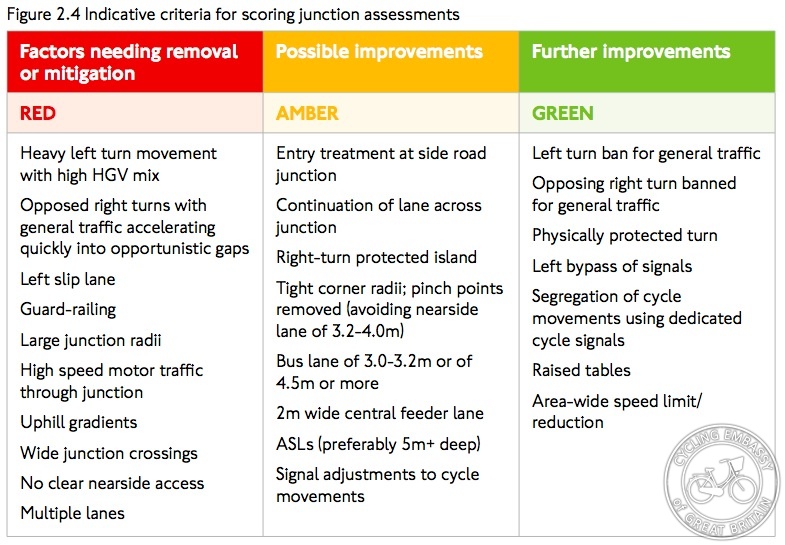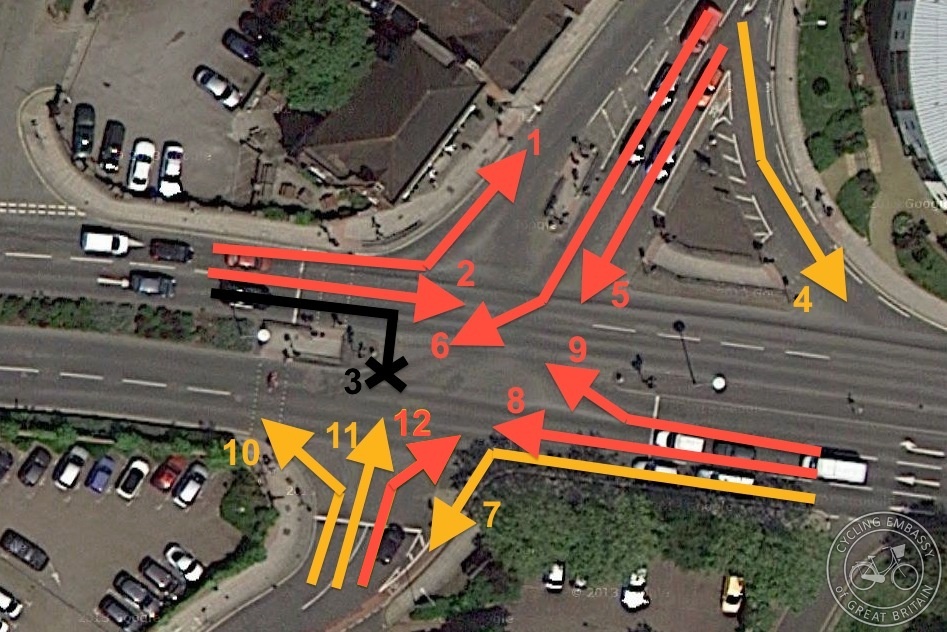I thought I'd start a thread for people to post their audits of junctions, using the London Cycling Design Standards Junction Assessment Tool.
It can be found in Chapter 2 of LCDS - 'Tools and Techniques', but I've posted it here for reference.

Each potential movement at a junction is scored as follows -
- not allowed/red = 0
- amber = 1
- green = 2
For a crossroads, there are 12 potential movements (left, right, straight-on, on each arm), so the total potential score is 24.
For a t-junction, there are 6 potential movements (2 on each of the three arms), so the total potential score is 12.
Each movement is rated according to the suggested criteria in the table above. You can post your assessment - with diagrams if you like! - in the thread below.

